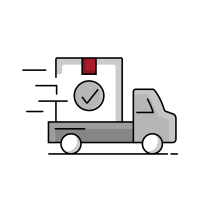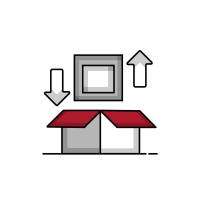FORMING
Bending
Austenitic heat resistant alloys should almost always be bent cold. These alloys always work harden during deformation, therefore, it is essential to know the elongation of the material being bent (actual values and minimum values). When performing severe deformation that will exceed the elongation of the material, an intermediate anneal will be required. Consult a qualified metallurgist for annealing parameters and cooling method.
Most austenitic alloys can be bent as much as 180 degrees with a minimum inside radius equal to TWICE the material thickness. Higher strength alloys such as RA 253 MA® will require greater force and experience more spring back than softer materials such as 304 or 309 stainless steel. There are exceptions to this rule. RA 602 CA® for example will require a more generous bend radius of at least THREE times the material thickness up to 0.4 inches. Good practice is to use larger than the minimum radius when possible, in order to make the process more robust.
Edge preparation is essential in order to obtain a good crack free bend. This includes removing all shear burrs from the edges of a material and rounding off edges using a grinder to remove areas where stress can accumulate at when forming. The photo below, of RA333 shows the importance of good edge preparation.
Duplex and ferritic stainless steels have lower elongation than austenitic stainless steels and therefore will require more generous bend radii than austenitic materials. In some cases, ferritic stainless steels, such as 446, will need to be preheated to a modest temperature (250 to 400°F) in order to bend. When working with these types of materials for the first time, consult a metallurgist for bending parameters. All hardenable materials should be bent in the annealed condition or the most ductile condition. A material such as 17-4 is quite brittle in the solution annealed condition. Consideration should be given to bending in the H1150 condition, and reheat treating if necessary to get the required properties. In such cases, be aware that material can deform from the air quenching operation.
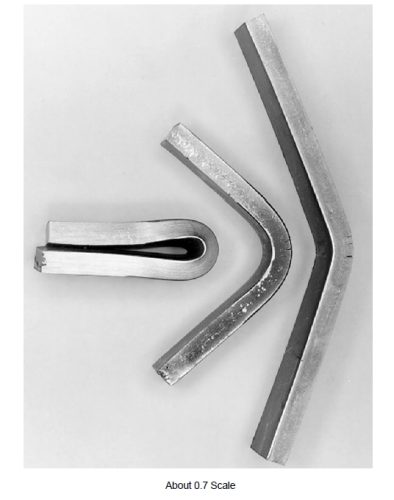
Forging
Hot forging should be used only if cold pressing cannot do the job. Working ranges are narrow and close control of temperature, time, heating atmosphere and reduction are all important when it comes to forging.
Heat resistant alloys must be heated throughout the section thickness. Typically, forging should begin when the metal is around 2100-2200F (1150-1200C), and finish before the metal cools below 1700F (930C); however, the exact temperature ranges from alloy to alloy. Forging either too hot or, more likely, too cold may cause cracking.
Never, attempt to bend or form any austenitic alloy in the 1100-1600F (590-870C) temperature range. Whether 304 stainless or nickel alloy 600, all will tear when formed at these temperatures. Unlike carbon steel, heating locally with a torch to make bending easier just doesn’t work. It is too difficult to heat nickel alloys uniformly hot enough throughout the section.
Spinning and Deep Drawing
Spinning and deep drawing can be accomplished by taking into consideration the physical properties, work hardening, and annealing.
RA330 spins rather well, roughly comparable to 304 stainless. None of the heat resistant alloys will deep draw as well as 304. Dies for drawing the heat resistant alloys ought not be proofed with 304, as results will be different.
Plate Processing
Shearing
Best for alloys with higher tensile strength and stronger heat resisting in the annealed condition than mild steel.
On our shear rated 3/8” (9.5 mm) mild steel, we regularly shear 1/4” (6.35 mm) heat resisting alloy. The hydraulic shear, rated 3/4” (19 mm) mild steel, will handle 1/2” (12.7 mm) alloy plate. Good shearing practice cuts about 20% of the metal and fractures the remaining 80%. Heavier thickness plate is best cut by abrasive wheels, which produce a smooth, close tolerance surface.
Plate Cutting Operations
Shapes and parts can be cut rapidly using plasma, laser, and water jet. There are some important considerations that must be considered when choosing the method. Plasma and laser cutting are high heat input cutting process that melt a localized area of metal. During the cutting process, a high pressure gas stream blows the liquid metal down and out of the cut, to create the cut edge. Water jet cutting is a completely solid state process where finely graded garnet is mixed in with a high pressure water stream where the pressure and abrasion are sufficient to make the cut.
It is important to note that with laser and plasma cutting, there is a zone of melted and resolidified metal at the edge of the cut and a heat affected zone just adjacent to the melted zone. Plasma can leave a heat affected zone as deep as 0.250 inches into the metal. Laser cutting leaves a much smaller heat affected zone, typically 0.063 inches or less. For martensitic materials such as 410, 446, and 17-4 stainless steels, this leaves an untempered martensite edge, which is susceptible to quench cracking. Ideally, these two processes should not be used to cut martensitic metals. However, because of productivity and cost, some insist on using these processes. In such cases, materials should be cut with at least an extra 0.500 inches on all sides, and it must be understood that this margin of safety may not be sufficient. For these materials, the best solution is to either saw cut plate, or water jet cut shapes.
Care also needs to be taken in deciding to use plasma or laser on the duplex family of stainless steels or 6 Mo and higher austenitic stainless steels. The reason for this is that the melting process can liberate or alter the deliberate additions of both nitrogen and molybdenum in these materials, and negatively impact pitting corrosion resistance. The reason for this can be understood by understanding the calculation for pitting resistance equivalent number (PREN):
PREN = %Cr + 3.3 x (%Mo + 0.5 x W%) + 16 x %N
(See PREN Calculator HERE)
By decreasing the nitrogen, and to a lesser extent the molybdenum content, the pitting resistance in cut and/or weld areas can be severely reduced. For welds, this issue is overcome by using over-alloyed filler metals. There is no compensation for a cut edge, except using a different process that does not create a liquid/resolidified zone, such as water jet cutting or plate cutting. Another option would be to add cut material wider and longer, and grind away the extra material that would include the resolidified zone.
In short, in materials where creating a melted and resolidified zone, the process makes some materials much more susceptible to cracking, and much more susceptible to corrosion.
For heat resistant austenitic materials that will see very high temperatures, where they will turn color from the heat, there is far less concern about these melted and resolidified areas since there is no phase transformation that will result in a hardenable structure, and thus no driving force for cracking. In these high temperature environments, the melted and resolidified zones present little to no concerns to their use. In these cases, laser and plasma cutting are quite acceptable cutting practices.
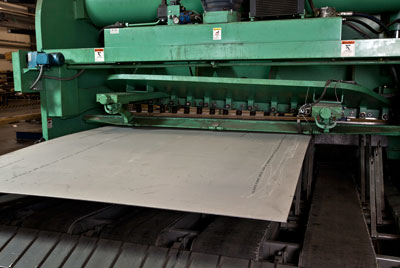
E-Services Stocking Programs
Our e-service stocking programs put you in the driver seat by using our customized purchasing options to order your recurring material with ease. Whether you have an internal process for purchasing and receiving in place or maybe looking for solutions to become more efficient, we have a program that will work for you.
Buy Online Anytime
Our dashboard makes it even easier to shop online anytime from anywhere. Quote, buy, and track 24 hours a day.


